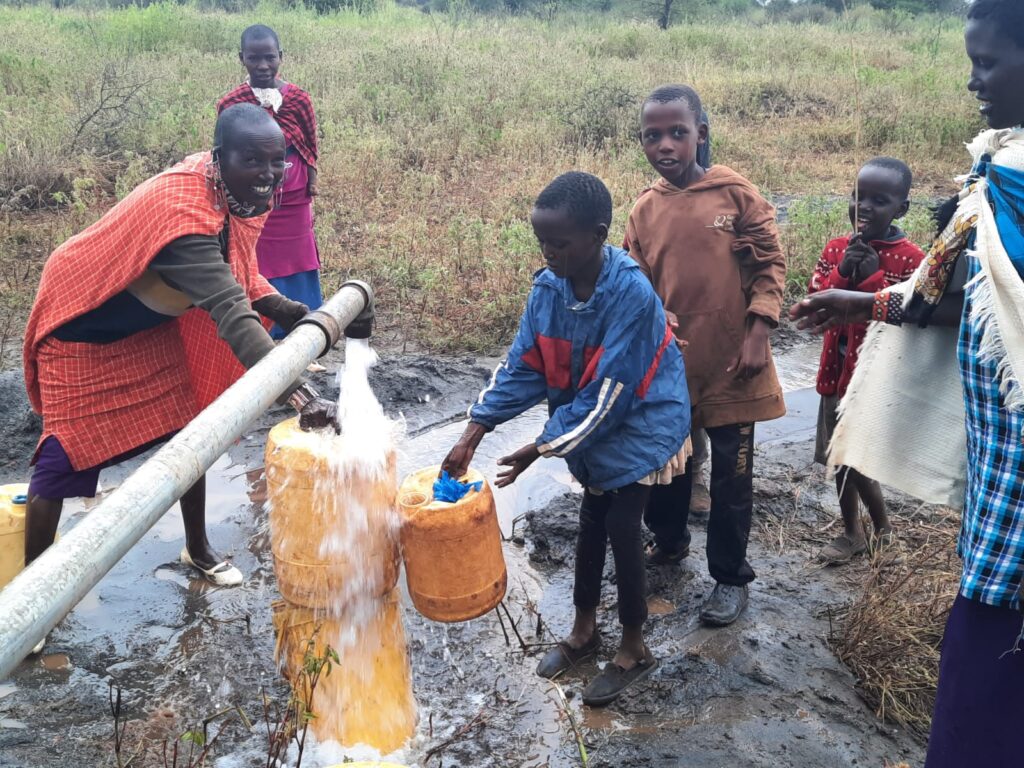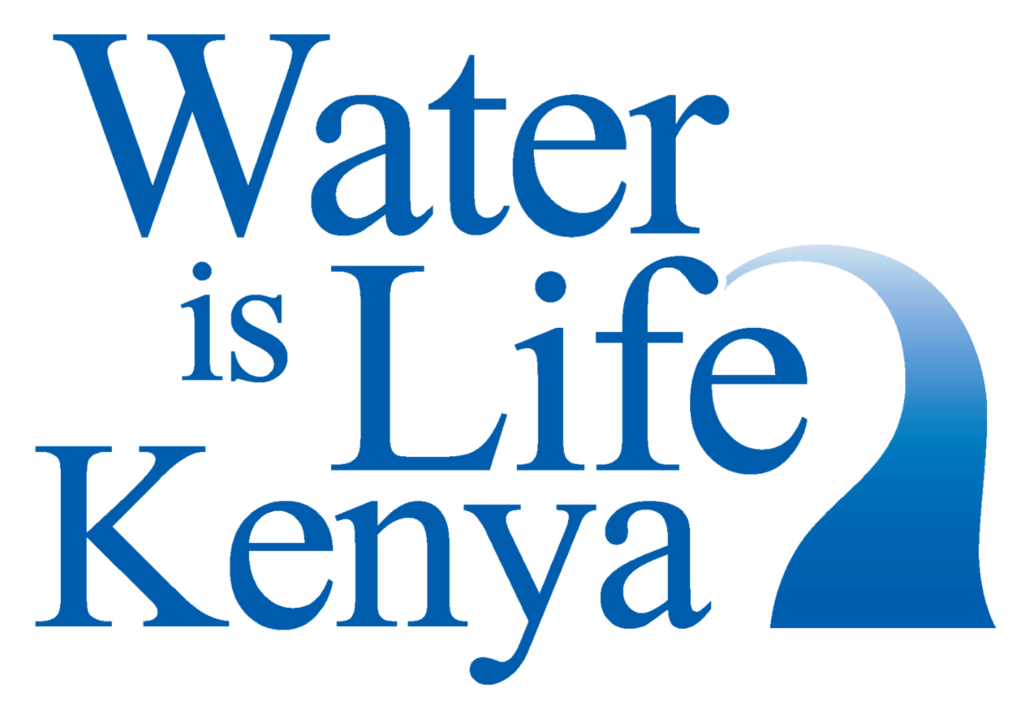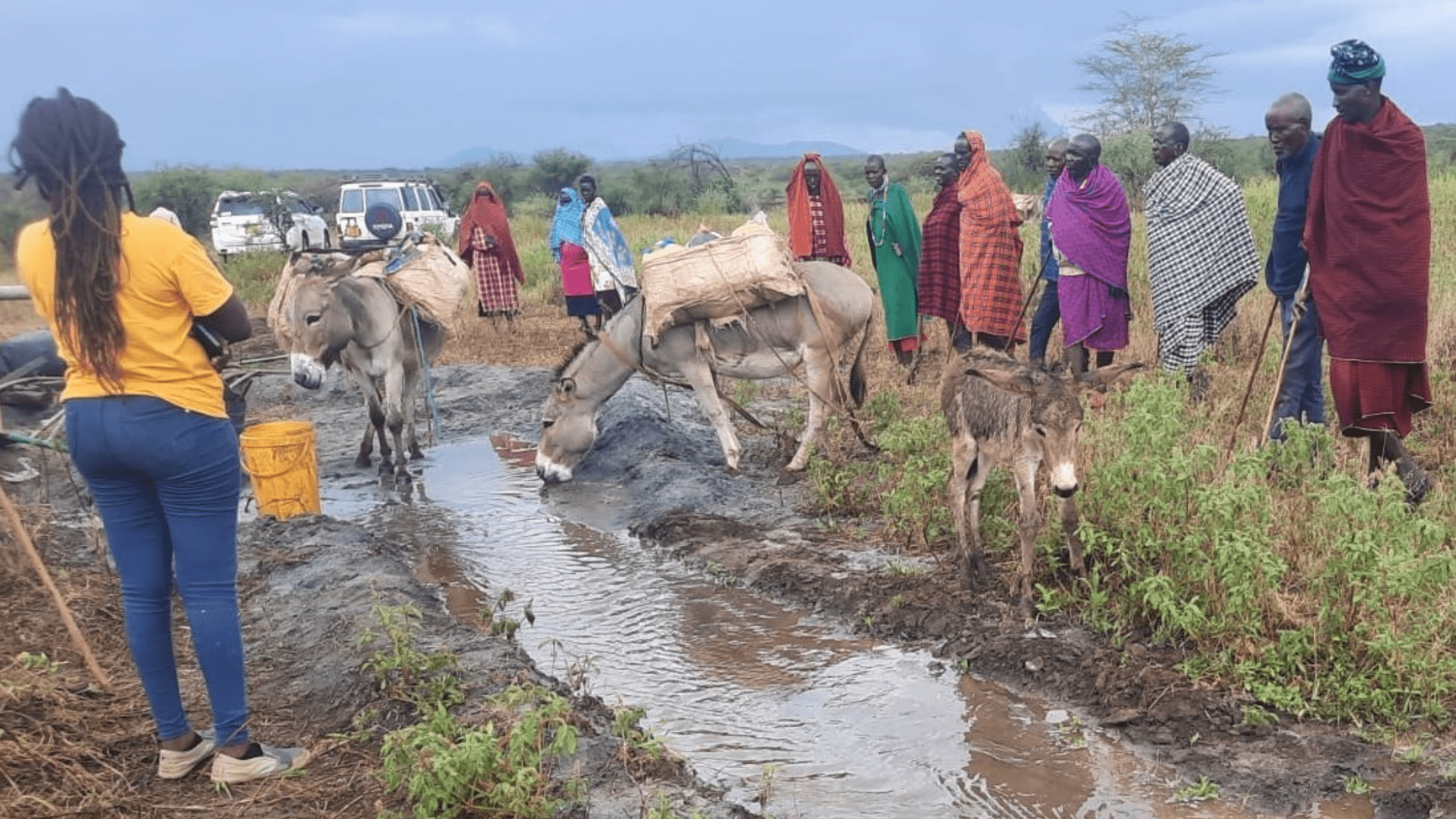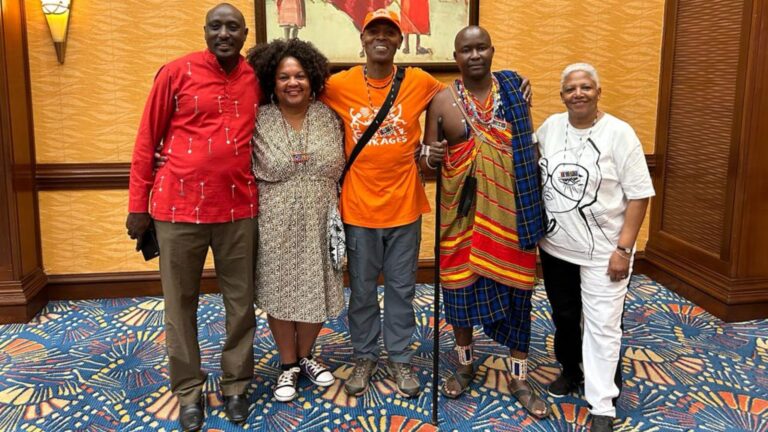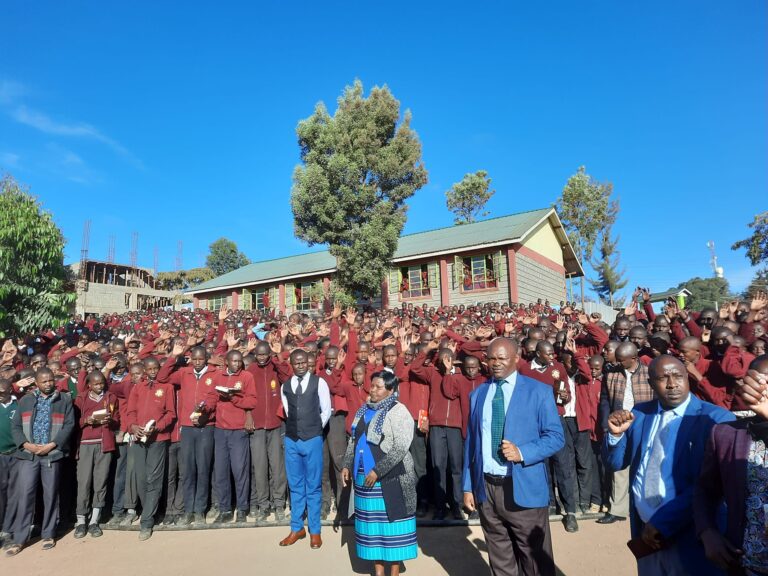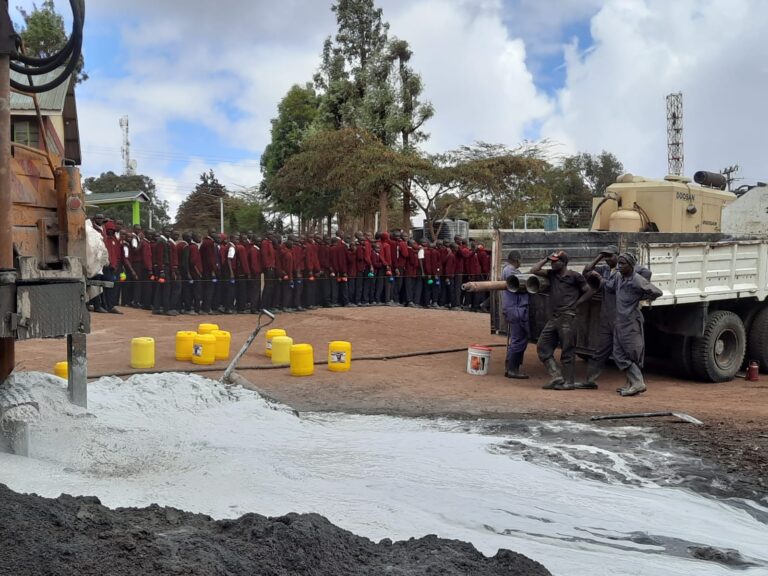Last year we met Michael Lankoi, a teacher from Lositeti who came to the Nooriro borehole ceremony. He’d heard about the work we do in Kajiado County, Kenya, and told us about how much people were suffering in Lositeti because of the three-year-long drought that was still ongoing. After visiting Lositeti to get a sense of the problem, we decided to build a borehole to help the community.
This is the story of how we’re bringing water to Lositeti.
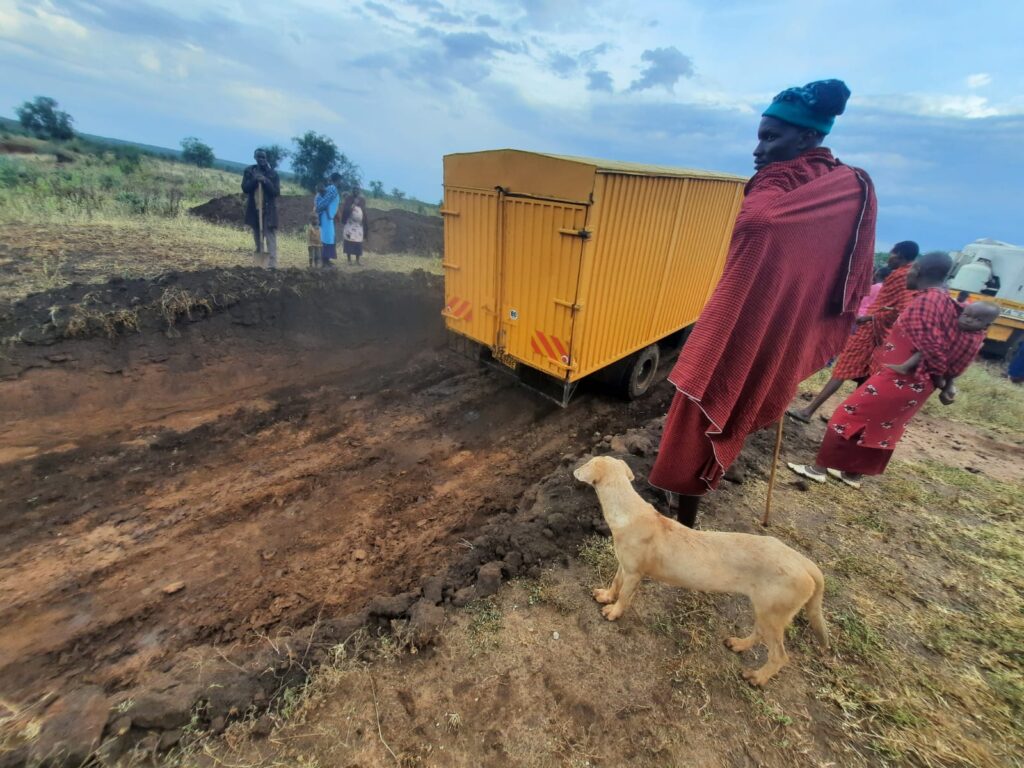
Water Troubles
We talk a lot about how long many women and their daughters have to walk to find water in Kenya. Lositeti was no different. Even last week, when we discussed the issue with women who live there, they said it takes about six hours round-trip to bring water home. Sometimes, because the “water hole” didn’t necessarily have any water.
Instead, women “scooped” in a sand bed to try to retrieve whatever water they could. About 1/3 of the time, they wouldn’t get anything beyond sand. And the area was busy: both people and wild animals all went there for the same reason, looking for water in an area where it was supposed to be. Also, because of the animals’ waste, the water wasn’t safe for consumption.
Plus, it’s hot. Imagine walking all that way for nothing.
Economic Difficulties
People in Lositeti are still struggling after the devastating drought that just ended in Kenya. Many cows died from lack of grass and water, leaving Maasai without their traditional means of savings. They haven’t been able to replace the lost cows, either. Right now, they can only afford to eat maize because beans are hard to come by. People are so poor and isolated that, even with the rain falling now, they can’t bounce back.
Lositeti is the most remote of our water projects, and Michael traveled a long way to reach us. Even though he’d heard of us through interacting with other communities, other people in Lositeti weren’t aware of how we could help.
The Road Less Traveled
Recent rain meant the road couldn’t support the weight of the trucks bringing in the drilling equipment. On February 19, after they’d had some time to dry, we decided to test the road. At one point, the trucks got stuck in a muddy spot. It took some persistence and elbow grease, but by the end of the day the drilling rig and casings were in place. What a celebration for our friend Michael on his birthday!
Drilling began the following day. We hit the first aquifer at 28 meters, which was much sooner than we expected. Ultimately, we drilled down to about 150 meters (almost 500 feet) where we decided the rate of the water flow would be sufficient. On February 26, we began test pumping. Early reports from the people who filled their water jugs suggest that the water is “tasty.” More importantly, about two minutes after we stopped pumping the water level rose back to where it needed to be.
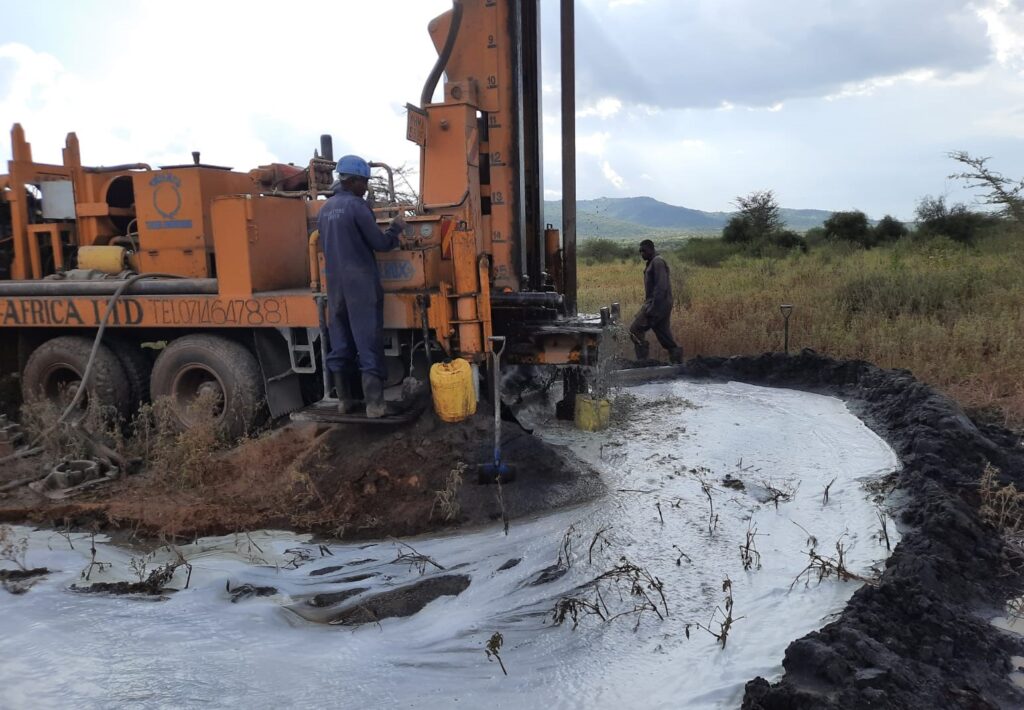
Building a Better Future with Water
The construction of the borehole in Lositeti will take several months. There are also decisions to make regarding the size of the pump and how to power it. These choices will determine how many connections to the new water source can be made as well as how much it will cost to keep the borehole running. In an area where there isn’t much money, it’s important to plan out as much as possible to avoid making costly changes later on.
We’re hopeful that the good luck we’ve had in Lositeti will continue, and we’re so grateful to Rotary District 7630 and the rest of our faithful donors who contributed towards this water project. We can’t wait to complete the borehole so that Lositeti will have fresh, clean water available for a long time to come.
